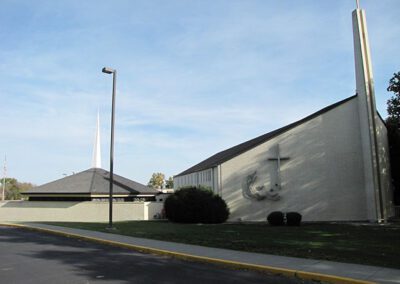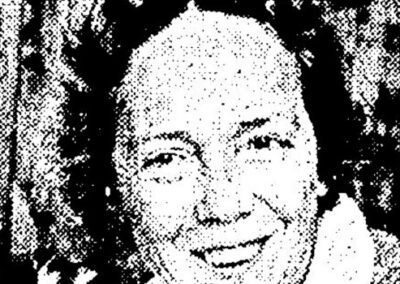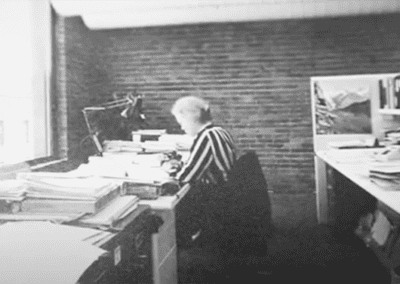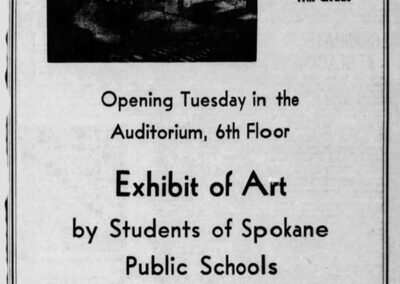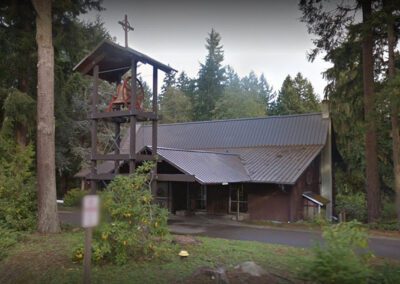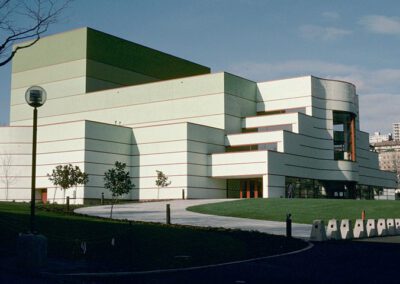
Alden, N. Sue
(1928 – )
As a managing associate in one of the largest architectural firms in the nation, Naramore, Bain, Brady & Johanson (NBBJ), N. Sue Alden has served as a positive role model to aspiring female architecture students for several generations. Her experience as a project architect for varied and complex building types was broader than many of her female colleagues, whom during the 1970s and 1980s primarily ran small women-owned firms.
A native Washingtonian, Nellie Susanella Harris was born on June 26, 1928 in Seattle. By the time she was a teenager the family had moved to Spokane where she graduated from Lewis & Clark High School in 1946. Active in the Fine Arts Club, her drawing of the Centennial Mill was displayed at a student art show at The Crescent Department Store in 1945. A swimmer, she was also very active in Spokane Mountaineers Club, and was often cited in local newspapers articles about the adventures of the club and their skiing outings.
Harris graduated with B.A. in Architecture from the University of Washington (UW) in 1951. An honor student, and member of Tau Sigma Delta national honorary society for architectural students, Harris was the only woman in her class at the time of her graduation. Looking for a job, she gained valuable experience by working with the architectural firms of Tucker & Shields (1954-58), and Durham, Anderson & Freed.
Alden acquired her architect license in 1954. That same year she married fellow UW architect Richard S. Alden on March 21. By the early 1970s, she was working for the noted architectural firm of NBBJ. In 1977 she became an Associate, then Project Manager in 1980, and finally a Managing Associate for NBBJ in 1982.
Alden’s specialty was in the development and incorporation of building codes into the early design process in order to avoid re-design issues later on. This was at a time when few were knowledgeable about codes and her expertise quickly gained her respect among her peers. In 1973 she was appointed to the King County Building Code Advisory Board and she became a member of the Seattle Fire Prevention Code Advisory Board. She also headed the City of Seattle Department of Construction and Land Use Committee (DCLU) to find ways to improve the permitting process by clarifying the procedures and shortening the process time.
Alden also took an active role in several AIA committees. In 1981 she was elected by the Seattle AIA chapter to the State Council serving in that role for more than ten years. As a member of AIA Washington State Council and Architects and Engineers Legislative Council (AELC), she guided the monitoring and prioritization of AIA lobbying efforts for proposed legislation at the state level affecting the profession and environment and often served on juried design competitions.
Seeking to influence a new generation of architects, Alden became a Design Studio instructor at the University of Washington College of Architecture and Urban Planning in 1974. She also was a charter and long-time member of the Association for Women in Architecture (1974-2004) and served as their treasurer for many years. In 1976 Alden also helped form the Sisters for a Human Environment (known as S.H.E.), with follow architect, Jean Young and urban planner, Patricia Getzel. The goal of the underground group was to encourage more women to become involved in the design professions.
Early projects Alden was involved in include the Central Methodist Church in Sedro Wooley (1959); the First Methodist Church in Mt. Vernon (1961); the Episcopal Church of the Holy Spirit on Vashon Island (1964); and the Central United Protestant Church in Richland (1964), all with Durham, Anderson & Freed.
As a project architect and manager with NBBJ, Alden was involved in a variety of projects including live performance theaters, high technology research centers, and prototype designs for nine Trident missile servicing facilities. Known projects at NBBJ include the Bagley Wright Theatre at Seattle Center (1983); Two Union Square, at 6th & Union in Seattle (1989); and the University of Washington Technology Center (1990).
For her long and distinguished career, Alden was recognized by her peers in 1991 when she was elected to the AIA College of Fellows. Retired, today she still resides in Seattle.
– Michael C Houser
